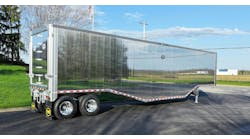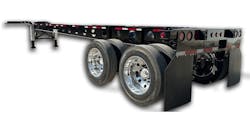The Volvo Group’s new truck engines in the US are more fuel efficient due to a piston design with waves on the piston crown that improve oxygen utilization.
“Over the past years, focus has mainly been on using computers to more efficiently control the combustion process,” says Jan Eismark, technical specialist in combustion systems. “It’s therefore, particularly pleasing that the change we have just made is exclusive to the hardware and the design of the piston crown.”
The more efficient combustion has reduced fuel consumption by an average of 2 percent.
However, it did require cutting-edge technology to prove that the initial ideas were correct and to identify the exact design of the piston crown. This entailed utilizing computational fluid dynamics (CFD) and high-speed filming of the combustion process inside the cylinder.
When the idea arose, the combustion development team was attempting to reduce the amount of soot particles in exhaust gases in a project, which was partly funded by the Swedish Energy Agency. They were using a single cylinder engine to test different pistons and fuel injectors. The results of both engine test results and the CFD calculations meant they could see substantial differences in soot quantities.
“The design of the combustion chamber seemed to be significant,” says Jan Eismark who started to sketch possible changes to the design.
In a standard piston, the injector is located in the piston top and the fuel is sprayed toward the cylinder sides through a number of orifices in the injector. The combination of heat and pressure causes the fuel to ignite before hitting the wall. The flame hits the wall of the combustion chamber at a speed of up to 50 meters per second, spreads along the piston bowl wall and then collides with adjacent flames at an angle of 180 degrees, still at a high speed.
When the flames collide, they compete for the oxygen available there. At the same time, the oxygen in the center of the combustion chamber is never fully utilized.
“Therefore, we wanted to identify a method of leading the flames into the center of the combustion chamber and, thereby better utilize the oxygen there,” explains Jan Eismark.
This resulted in the ridges or waves in the piston crown. The piston has six such ridges and the injector, which is located in the center of the piston top, has six orifices to ensure the fuel is sprayed between the ridges. Jan Eismark owns the basic patent for the technology together with his colleague Michael Balthasar.








